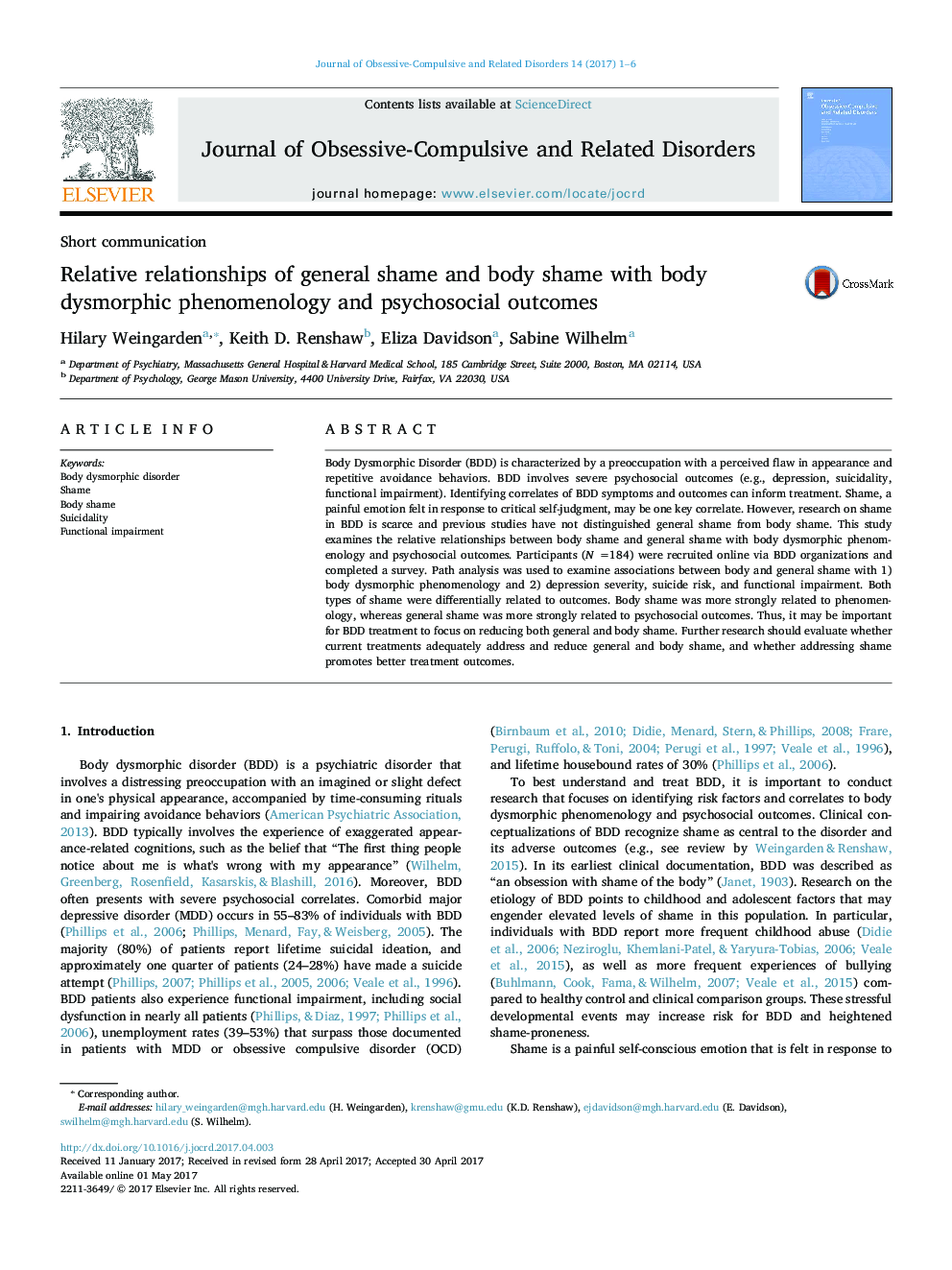| Article ID | Journal | Published Year | Pages | File Type |
|---|---|---|---|---|
| 5039320 | Journal of Obsessive-Compulsive and Related Disorders | 2017 | 6 Pages |
â¢Examines relationship of general and body shame with BDD phenomenology and outcomes.â¢Body shame was more strongly related to BDD phenomenology than general shame.â¢General shame was more strongly related to adverse outcomes than body shame.â¢It may be important for BDD treatments to focus on reducing both types of shame.
Body Dysmorphic Disorder (BDD) is characterized by a preoccupation with a perceived flaw in appearance and repetitive avoidance behaviors. BDD involves severe psychosocial outcomes (e.g., depression, suicidality, functional impairment). Identifying correlates of BDD symptoms and outcomes can inform treatment. Shame, a painful emotion felt in response to critical self-judgment, may be one key correlate. However, research on shame in BDD is scarce and previous studies have not distinguished general shame from body shame. This study examines the relative relationships between body shame and general shame with body dysmorphic phenomenology and psychosocial outcomes. Participants (N =184) were recruited online via BDD organizations and completed a survey. Path analysis was used to examine associations between body and general shame with 1) body dysmorphic phenomenology and 2) depression severity, suicide risk, and functional impairment. Both types of shame were differentially related to outcomes. Body shame was more strongly related to phenomenology, whereas general shame was more strongly related to psychosocial outcomes. Thus, it may be important for BDD treatment to focus on reducing both general and body shame. Further research should evaluate whether current treatments adequately address and reduce general and body shame, and whether addressing shame promotes better treatment outcomes.
